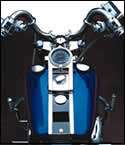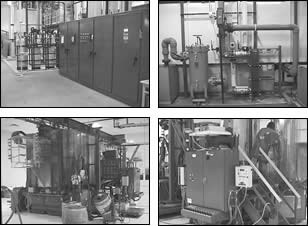Powder Coating Allows for Maximum Flexibility for Venerable Harley Davidson
Harley-Davidson backs up its in-your-face slogan - “It’s one thing to have people buy your product.
Harley-Davidson backs up its in-your-face slogan - “It’s one thing to have people buy your product. It’s another for them to tattoo your name on their bodies” - with a solid record of performance. It has set sales and production records for 14 consecutive years. Many factors are responsible for Harley Davidson's economic success and near-cult brand loyalty. One of the most important has been powder coating.
Until late 1994, Harley Davidson’s Milwaukee power train division used liquid paint on the engines and transmissions it manufactured. But there were problems. “One of the big reasons that steered us toward powder was stability,” explained Ken Ellis, the Senior Manufacturing Engineer.
Featured Content
That wasn’t all. “There were cost, performance and environmental advantages of powder as well,” Mr. Ellis said. “When we liquid painted our components, many of them had to be painted after machining, which was much more costly.”
Harley-Davidson now powder coats all the components of its drive train at a powder coating facility in Milwaukee that services two manufacturing plants. The facility has a dual line conveyor system with a capacity of approximately 10,000 parts per day. For each line, there is an inverted enclosed track system. Parts pass through six stages: pretreatment washer, a dry-off oven and a cool-down chamber, then an environmental room, a cure oven and final cool-down chambers. Parts are powder coated black or silver using a combination of automatic and manual guns. According to Mr. Ellis, the plant produces parts with a wide variety of shapes and sizes.
The new plant gives Harley-Davidson the chance to increase its efficiency even more. Mr. Ellis said, “We’re looking for some line speed improvements with the new facility. Also, we are doing some technical improvements, including more automation, better layout and greater flexibility. We will have the latest technology that is out there right now.”
There is one particular technological enhancement that the company is especially proud of. “We’ve gone to automatic feed pumps to control our wash line stages, which is something we’ve been doing for a while. However, we now download that data into a statistical process control (SPC) package,” he continued. “Every fifteen minutes, we download information from our wash line, whether it be temperature, pH or concentration, into the SPC package, so at any remote location in the plant, you can watch how the wash line is performing. We get a much better picture of what is happening in our wash line at any given time. It gives us confidence in the performance of the end product.”
With the influx of data, the rate of defects has decreased dramatically, which saves the company time and money.
Outside of Milwaukee, the company uses powder coating for the clear coat on its tanks and fenders, and motorcycle frames are powder coated at plants in York, Pennsylvania, and Kansas City, Missouri.
And who knows what lies ahead? The company has begun powder coating motorcycle parts that have been traditionally chromium plated or polished, which are already winning customers in Europe.
RELATED CONTENT
-
Improving Transfer Efficiencies in Coating Operations
There are many methods for addressing electrostatic grounding in metal painting processes, and Tim Ulshafer from Mueller Electric says the best method for your process is a simple and worthwhile exercise.
-
The Powder Coating Process
Powder coating is one of the most durable finishes that can be applied to industrial manufactured products, and offers excellent corrosion protection and is very safe because of its lack of volatile organic compounds. To understand the powder coating process you should start with the fundamentals.
-
Calculating the Cost of Powder Coating
How can you calculate the cost of powder coating a component if you only know its surface area? Powder coating expert Rodger Talbert has the answer.




















